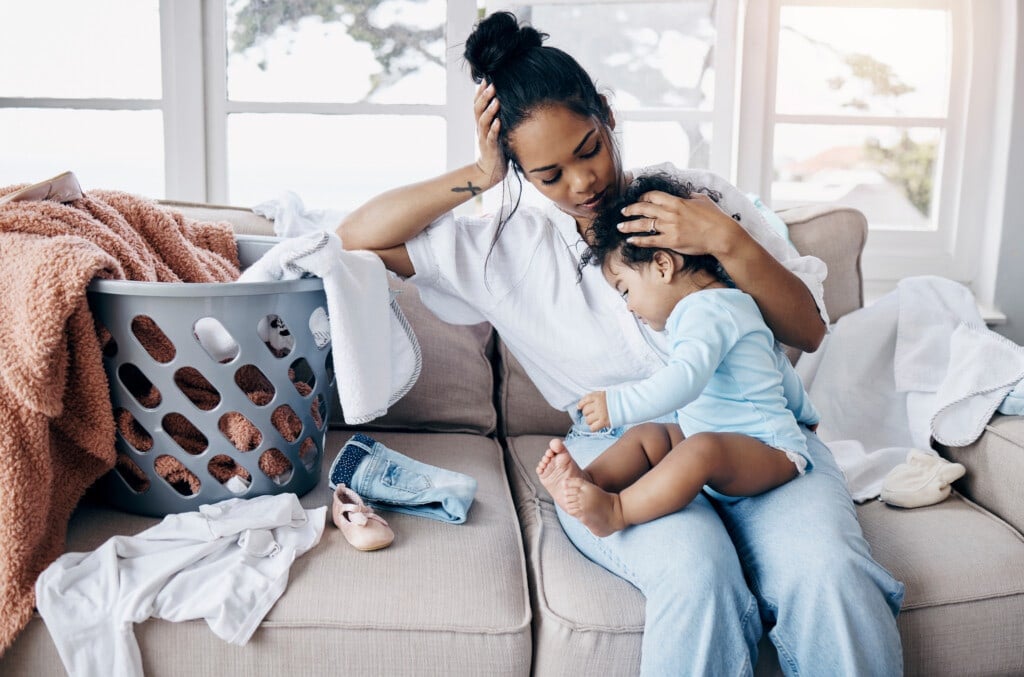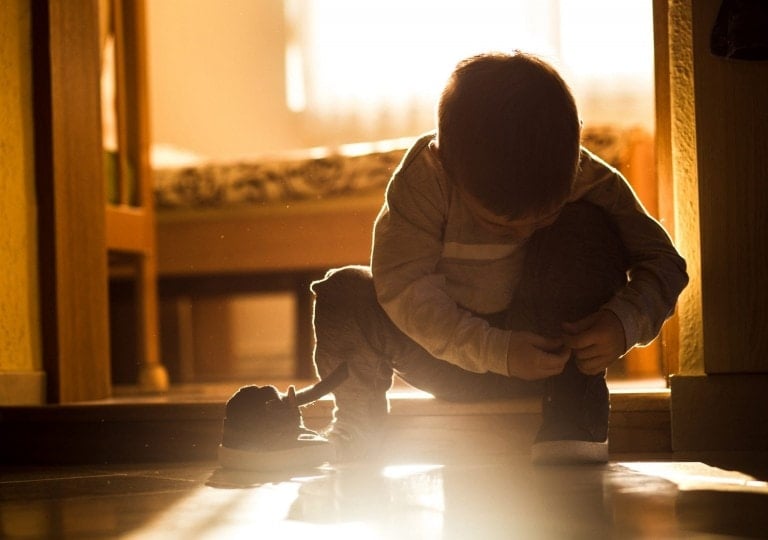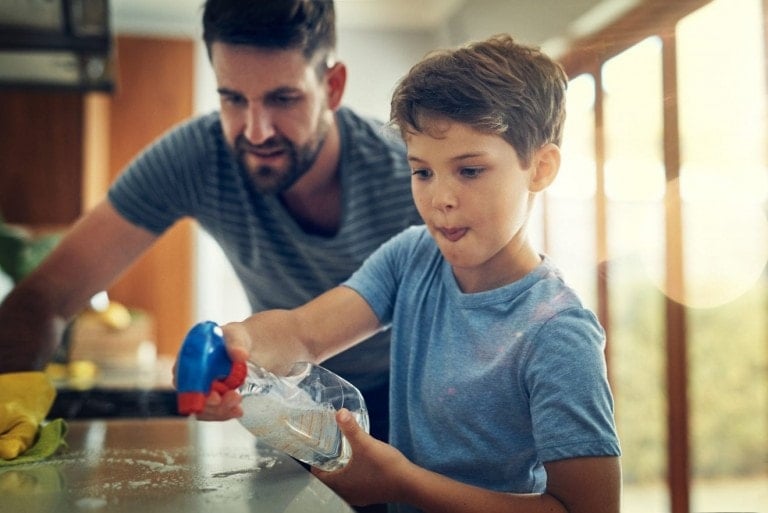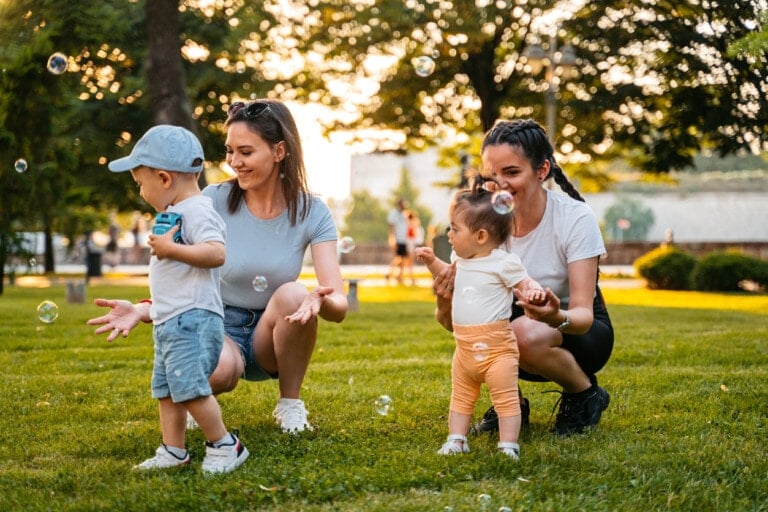This summer, my family bought and moved into our first house. I was excited to spread out a bit compared to our cramped old rental home. I was also looking forward to the open floor plan, thinking that my toddler could play in the other room while I cooked dinner while remaining in my line of sight. Unfortunately, toddler clinginess kicked in right around the time we moved in. I couldn’t even wash a dish at the sink while she stood right next to me—I had to be holding her, or she was throwing a tantrum while clinging and clutching onto my leg. It wasn’t good enough for me to sit on the floor and play with her; she had to be on my lap. We were not close enough if we were not attached at the hip.
My daughter has always been a “mama’s girl,” and we have always been close. Because of this, she had a tough initial adjustment to daycare at six months old. However, she eventually grew accustomed to her days at daycare and developed secure attachments with her teachers and friends there. She is generally very social and happy, so this sudden change in behavior toward intense clinginess piqued my curiosity. What’s behind toddler clinginess? Is this normal? How do I help her and make this better for us?
Is Clinginess Normal?
Separation anxiety is when a child shows distress about being separated from their primary/secure attachment figure. It usually appears from six months, peaking in presentation between 14-18 months, and can continue until around two, although this can vary significantly between children.1,3,5,6 Separation anxiety can also be coupled with stranger anxiety when children show distress around new people being present. This often starts around the same time as separation anxiety but usually disappears by their first birthday.5,6
Separation anxiety usually occurs in conjunction with a developmental skill or stage of development where children learn about object permanence. This is when they realize that objects continue to exist even when they can’t see, hear, or sense their presence. This means that until our kids learn this essential skill, they believe that we have left and ceased to exist (gone forever!), which is why it is so terrifying for them when we are out of sight.5,6
The CDC even includes4 clingy behaviors in their milestone maps. At nine months, babies should be “shy, clingy, or fearful around strangers.” At 18 months, your child should be looking to ensure you are close by. Between 15-18 months, toddlers may throw tantrums if they do not get their way, such as when you will not or cannot cater to their clinginess. These tantrums are also considered normal and should lessen in duration and frequency with increasing age.
Why are Toddlers Clingy?
Clinginess is a sign that your toddler trusts you, feels safe around you, and wants to be near you. Toddlers are still learning their world and look to you for signs that their environment and surrounding people are safe. Your closeness and presence reassure them. It makes sense for toddlers to be skeptical of new situations because it fosters withdrawal from potential dangers. Therefore, new environments and conditions can cause clingy behaviors to flare up.
Some children can also be inclined toward clinginess. This is likely a combination of genetic and learned behaviors.1 Toddlers can be influenced by their family dynamics and situation, illnesses, routine changes, and other life events. Some common triggers for clinginess include:
New Environments
Moving seemed to coincide with the onset of my toddler’s clingy phase, and I am confident the two events are linked. It is natural for people, particularly young children, to be skeptical of the new and unfamiliar. This is particularly true if they fear feeling rejected or neglected.1 If your toddler is suddenly clingy after a significant change, give them a few weeks to settle into their new environment to see if it improves.
Family Factors
Parental stress and anxiety are associated with increased shyness and anxiety. Overprotective parents foster toddler skepticism. Then, when these children act nervous, the parents become even more overprotective.1 All parents have anxiety about something, and no one enjoys seeing their child suffer, but try not to let them pick up on your anxiety.
Marriage conflict can also contribute to childhood shyness and anxiety. If you are having trouble with co-parenting, try having conversations out of earshot of your children. Of course, this is not always possible, but children should believe their parents are in alignment with their goals and beliefs.2
Illness
You are your child’s primary source of comfort. If they are not feeling well, it is expected that they would want to be close to the person that makes them feel better. Give them extra love, snuggles, and attention until they recover. You won’t be “creating a monster” or encouraging negative behavior by giving them what they need.
Disrupted Routine
Toddlers grow very accustomed to their habits and routines. Because I work in a school, I am home with my daughter in the summer. During the school year, she got used to being with different caregivers at daycare while I was at work. In the summer, her network of caregivers shrunk because I spent less time apart from her. She got used to being with Mom 24/7.
The week before we moved, my husband and I went away for the weekend without my daughter, leaving her with her grandparents. We have left her with her grandparents before, but it had been a while. We returned from our brief trip and moved the following week. There were a lot of disruptions in a short period to her regular, predictable routine.
After a few weeks in the new home, she was still clingy but had started to adjust. She knew her way around the new house and where her room and toys were. She grew more comfortable venturing to grab a book or a toy on her own. It will improve as this home and environment become more familiar to her.
It is difficult to pinpoint the cause of toddler clinginess because often, many factors are at play. We can do our best to keep their days predictable and aim for adaptable and flexible children. Parents are their little ones’ constants, so during times of change, they may hold us tighter (literally!). Embrace and reassure them, knowing we will emerge on the other side.
When to Worry
When wondering if your toddler’s clinginess is abnormal, consider how often it happens and how long it has been going on. If the clingy episodes occur multiple times per day, every day, for months as opposed to days or weeks, this might be abnormal. It will also be strange if clinginess has not faded by school age, though some apprehension about starting school in the younger grades is normal.3, 7 Some additional characteristics of an abnormal degree of toddler clinginess include:
Frequency and Duration
When wondering if your toddler’s clinginess is abnormal, consider how often it happens and how long it has been going on. If the clingy episodes occur multiple times per day, every day, for months as opposed to days or weeks, this might be abnormal. It will also be abnormal if clinginess has not faded by school age, though some apprehension about starting school in the younger grades is normal.3
Interfering With Life
Any tantrum can briefly disrupt your daily plans. However, suppose your child’s clinginess is preventing them from attending daycare, preventing you from ever leaving them, or interrupting their sleep. In that case, this may be a sign of a deeper problem or disorder.7
Physical Symptoms
Extreme clinginess and separation anxiety disorder can manifest with physical symptoms while the child is apart from a parent.3 Some examples include headaches and stomachaches. We see this often in school-aged children who frequently visit the school nurse. On the other hand, toddlers often cannot verbalize a physical complaint. Look for signs of pain such as rubbing eyes, forehead, or belly, excessive crying, nausea, vomiting, or lack of appetite.7
Does It Make Sense?
In my case, I could attribute my toddler’s clinginess to several factors that made sense. If the clinginess extends for a long time, does not appear to be getting better, and has no instigating event, this could be abnormal. However, it is developmentally appropriate for all toddlers to go through a clingy phase, even those who haven’t gone through a significant change like a move or starting a new daycare.
Helpful Tips to Help With Toddler Clinginess
If we respond appropriately to a toddler’s clinginess, we can help them through this stage and foster a more robust and healthier bond with our children. Children worry their caregivers will abandon or reject them and cling out of fear. If we can adequately assure them that we will return and aren’t leaving for good, they should feel more secure and understood. Here are some tips to help with toddler clinginess:
Be Sensitive to Them
A sensitive response to a child’s clinginess fosters security in the parent-child relationship.2 Validate your child’s feelings of wanting to be close. Try saying something like, “I know you want me to hold you. I love being close to you too. I have my hands full right now, so how about you help me by holding this? We can snuggle when I’m done.”
Create and Stick to a Routine
Familiar routines are comforting and reassuring for toddlers. If they know what to expect, they will likely be less nervous, apprehensive, and therefore less clingy. When possible, stick to predictability and let your toddler know what to expect in situations.
Practice Separation
Since toddler clinginess typically stems from a fear of abandonment, reassuring our children that we will return is essential. When leaving them with another trusted caregiver, start with small increments of time. Ease into your times apart, and your toddler will learn that you will always come back for them.
Encourage Exploration
It is natural for parents to worry; we are most comfortable when our children are near us and visible. However, since toddlers feed off our anxiety, try not to show your nervousness when they venture off. Instead, you can encourage them to check something away from you. Just make sure you are in a safe or baby-proofed environment.
Praise Their Independence
Young children thrive off praise. When your toddler shows bravery and comfort being apart from you, comment on it. When they know that not only are they safe without you but are also making you proud and happy, they are more likely to want to do it again. However, if possible, try not to force it. It is best if they decide to venture from you on their own.
Provide Comfort Items
When you leave your child with another trusted caregiver, try to leave them with something familiar or that reminds them of you. This can be a photo, a stuffed animal, or even an article of clothing.
Excessive childhood shyness and clinginess can foreshadow adjustment problems later in life.1 Treatments are available to help with separation anxiety disorder, so if you suspect your child is abnormally clingy, do not hesitate to seek help.
More likely than not, your toddler’s clinginess is just a difficult phase that will pass. If you are concerned that this behavior is extreme, abnormal, or has gone on for too long, trust your instincts. After all, parents know their children best and may be able to identify and recognize shyness and anxiety in their children more quickly. Reach out to your pediatrician for guidance, reassurance, or potential evaluation.
Toddler clinginess can be incredibly frustrating. You may feel like you can’t get anything done with your little one attached to your leg. Or you may be tired of their cries when you put them down or leave them. Unfortunately, most toddlers go through this normal part of child development. Take the toddler clinginess as an opportunity to demonstrate to your child that they are safe without you sometimes but that you will always return for them. It is a challenging phase, but almost always just a phase. If handled appropriately with understanding, patience, and valuable tips, you and your toddler can become stronger together and apart.
































